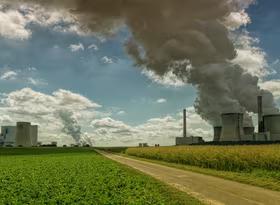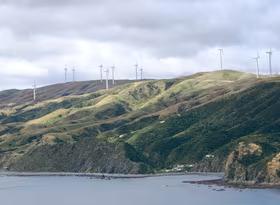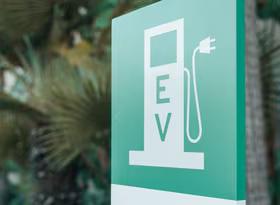A national energy strategy is just the beginning
In its advice to the government, the Climate Change Commission (CCC) recommends the urgent development of a long-term national energy strategy to decarbonise the energy system and ensure the electricity sector is ready to meet future needs.
A national energy strategy would need to set out how to transition the energy sector away from fossil fuels, how to solve the dry year problem, detail what new infrastructure is required and when, how and when old infrastructure should be decommissioned, how supply chains need to adapt, how to disseminate low-emissions technologies, and how the skill needs of the energy workforce need to change. In particular, it needs to set out, with certainty, the investments needed to decarbonise our energy system so that businesses and individuals have the time and confidence to respond.
That’s a long ‘to do’ list, and producing a strategy that is backed by political parties across the political spectrum and the industry itself (no mean feat!), is only the beginning. The strategy needs to be implemented and at the same time the lights need to be kept on, our homes and offices kept warm, our industrial heaters kept burning, our vehicles kept moving and our energy prices need to remain affordable. Over the next 15 years, supplying energy in New Zealand will be like making dinner for the whānau while your kitchen is being renovated.
Two-thirds (66%) of New Zealand’s energy consumption comes from burning fossil fuels. Of the energy that is consumed from fossil fuels, 59% is by the transport sector and 29% is by industry (mainly heating processes). Currently, about one-quarter of New Zealand’s energy consumption comes from electricity, most of which is generated from renewables (see below) and is used mainly by the residential, industrial and commercial sectors. The remaining 10% of energy consumption comes directly from renewables.
Much of New Zealand’s electricity generation is from renewable energy (mainly hydro and geothermal) which puts us in a good position compared to other countries which currently depend on coal and other fossil fuels for electricity generation. It means that if we can switch our transport and industrial heating sectors away from consuming fossil fuels to using electricity, we can make a serious dent in our carbon emissions.
The kicker is that this will require a transformation in our energy infrastructure, technology, and workforce to increase New Zealand’s capacity to generate and distribute electricity. See Chart 1.
The CCC understands that New Zealand’s hydro and geothermal generating capacity is pretty much maxed out, so we need to look to other renewable sources. Solar is part of the mix, but solar uses up a lot of land and works best in areas where there is sufficient sunshine and the land isn’t fertile enough for farming. This narrows down the list of potential large scale sites quite considerably, although micro-scale solar PV on rooftops of houses and other buildings has a part to play.
Wind generation currently exists to a limited degree in New Zealand. The CCC recommends that we expand wind generation considerably in the near future. As any Wellingtonian will confirm, New Zealand is well placed to exploit its wind resources. Aside from wind farms being able to coexist with traditional farms, a key advantage of wind is that the windiest parts of the country are in the North Island, which means electricity generation will be close to the main population centres.
According to the New Zealand Wind Energy Association, New Zealand has 17 operating wind farms, with a combined installed capacity of 690 megawatts a year - about the same amount of electricity as 300,000 kiwi homes use in a year. There is currently approximately 2,500 MW of wind generation consented in New Zealand and developers are exploring new sites throughout New Zealand.
A key concern with increasing dependence on renewable energy sources is the dry year problem. Currently, wholesale electricity prices are elevated partly because hydro lake levels are low (a gas shortage is also partly to blame). High wholesale prices are expected to start influencing retail prices by the end of the year. Against a broader inflationary environment, this is a concern. So, when our energy generation is almost entirely a mix of hydro, geothermal and wind, what happens when the rain doesn’t fall, the wind doesn’t blow, and we can’t turn to fossil fuels for back up? We certainly don’t want a return to the dark days of blackouts and brownouts.
The Ministry of Business Innovation and Employment (MBIE) is looking for an answer to the vexing dry year question. Using the term ‘battery’ in its broadest sense to mean anything that stores energy, the New Zealand Battery Project is assessing ways that surplus energy can be stored for later use.
The lake Onslow pumped hydro scheme is the front runner, but no detailed cost-benefit analysis has been carried out to date. Pumped hydro involves two bodies of water, one higher than the other. In wet years when energy is abundant and therefore cheap, surplus energy is used to pump water from the lower reservoir to the higher one. In dry years, water in the elevated reservoir is discharged through turbines to generate electricity.
The lake Onslow scheme is controversial because of its sheer scale. The scheme would, in effect, turn the South Island rock basin into a massive 5000 gigawatt rechargeable battery, which is the same amount of energy as all the country’s existing hydro schemes combined. Some industry analysts are saying it could tip electricity generation, pricing arrangements and market structures on their head.
Some see the scheme as creating the foundation for investment in cheap wind generation, which is currently constrained by the uncertainty of weather conditions, as well as the divestment of fossil fuel generators such as Huntly Power Station. Others see the scheme and the uncertainty it creates, even while it is under consideration, as a factor which will dissuade electricity companies from investing in other types of generation.
As for the transport and industrial sectors transitioning away from fossil fuels, Electric Vehicle (EV) usage is growing exponentially, albeit from a low base. As of May this year, just over 20,400 pure (not hybrid) light EVs were registered in New Zealand with the number having doubled since April 2019. The CCC offers a number of paths for the uptake of EVs to help meet our emissions goals, but under the central path (the CCC calls it their Demonstration Path), the number of light EVs would need to increase to over 1.5m out of a total fleet size of just over 4.3m.
The use of fossil fuels by industry is mainly in heating process which are commonly divided into low, medium- and high-grade heat. Low-grade heat is classified as heat for processes which do not exceed 100°C; medium-grade heat is between 100°C and 300°C and high-grade heat exceeds 300°C. New Zealand’s top five energy-consuming industrial processes are petroleum refining, pulp and paper, dairy production, timber processing, and metal manufacturing.
Economic solutions for electrifying low and medium grade heat are available today and solutions for high grade heat are emerging. High Temperature Heat Pumps (HTHPs) can supply low and some medium-grade heat, and are becoming increasingly economic as units are produced at scale, new technologies are commercialised, and installation practices become standardised. Synlait, for example, commissioned its first electric boiler in its South Island plant in 2019.
So, the tide is turning, but the CCC is asking for nothing less than a sea change.
A strategy is only worth the paper it is written on. It must lead to action, and the CCC’s advice is that this action needs to happen now. However, even if the strategy were detailed enough to set out exactly what infrastructure the electricity generation, transmission and distribution was required, there’s still the complicated and lengthy RMA consenting process to undergo. And no, the government’s proposed reforms to the RMA will not happen soon enough to make a difference to these consenting processes in the next few years at least.
Wind farm developers, for example, need resource consent from relevant district and regional councils because wind farming is typically considered a “discretionary activity”. The consent authority can exercise full discretion as to whether it will grant consent for discretionary activities and what conditions are impose on the consent if granted.
The council will make application and supporting documents available to the public and seek public submissions on the proposal. Once the council has received submissions a resource consent hearing is held. The hearing’s commissioners will consider all the submissions it receives, together with the application, and then decide whether or not to grant the resource consent.
Consent decisions can be appealed to the Environment Court. The applicant or any person who made a submission on the application can appeal the decision. Environment Court Decisions can be appealed to the High Court only on a point of law.
The workforce that builds, maintains and provides services with the infrastructure used to supply electricity will also need to both grow and undergo significant change. The companies that build and operate the windfarms that exist in New Zealand today should have a good understanding of the skills required. These capabilities will need to be scaled up to address the increased wind farm generation capacity over the coming years. More generation also means more grid connections and interconnections, all of which will require a larger workforce.
The development of the ‘smart grid’ will require an entirely new set of skills. A smart grid is an electricity network overlayed with wireless telecommunications technology and smart home/business/industrial energy management systems. It involves extremely large amounts of real-time data collected throughout the grid to optimise its performance and use electricity as efficiently as possible. It will require people with the skills to integrate telecommunications, IT networks and software into the existing grid, and install smart’ devices in residential, commercial and industrial premises.
All this needs to happen against the backdrop of an aging electricity supply workforce, a tight labour market, a government signalling that, once borders reopen, it intends to reduce New Zealand’s reliance on temporary migrant workers, and reforms to vocational education. The electricity supply sector also faces stiff competition in the war for talent from other sectors - particularly construction which is currently doing an excellent job of attracting new workers and upskilling existing workers with the lure of free apprenticeship training mainly through the Apprenticeship Boost scheme.
The electricity supply sector has historically maintained a low profile. People only pay attention to the sector when the lights go out, which is not exactly a compelling way to attract new entrants. But that needs to change, and there’s never been a better time to do it. It’s no longer about keeping the lights on. It’s about coming to work for a growing sector, it’s about new and exciting technologies and engineering challenges, and yes, it’s about saving the planet.











